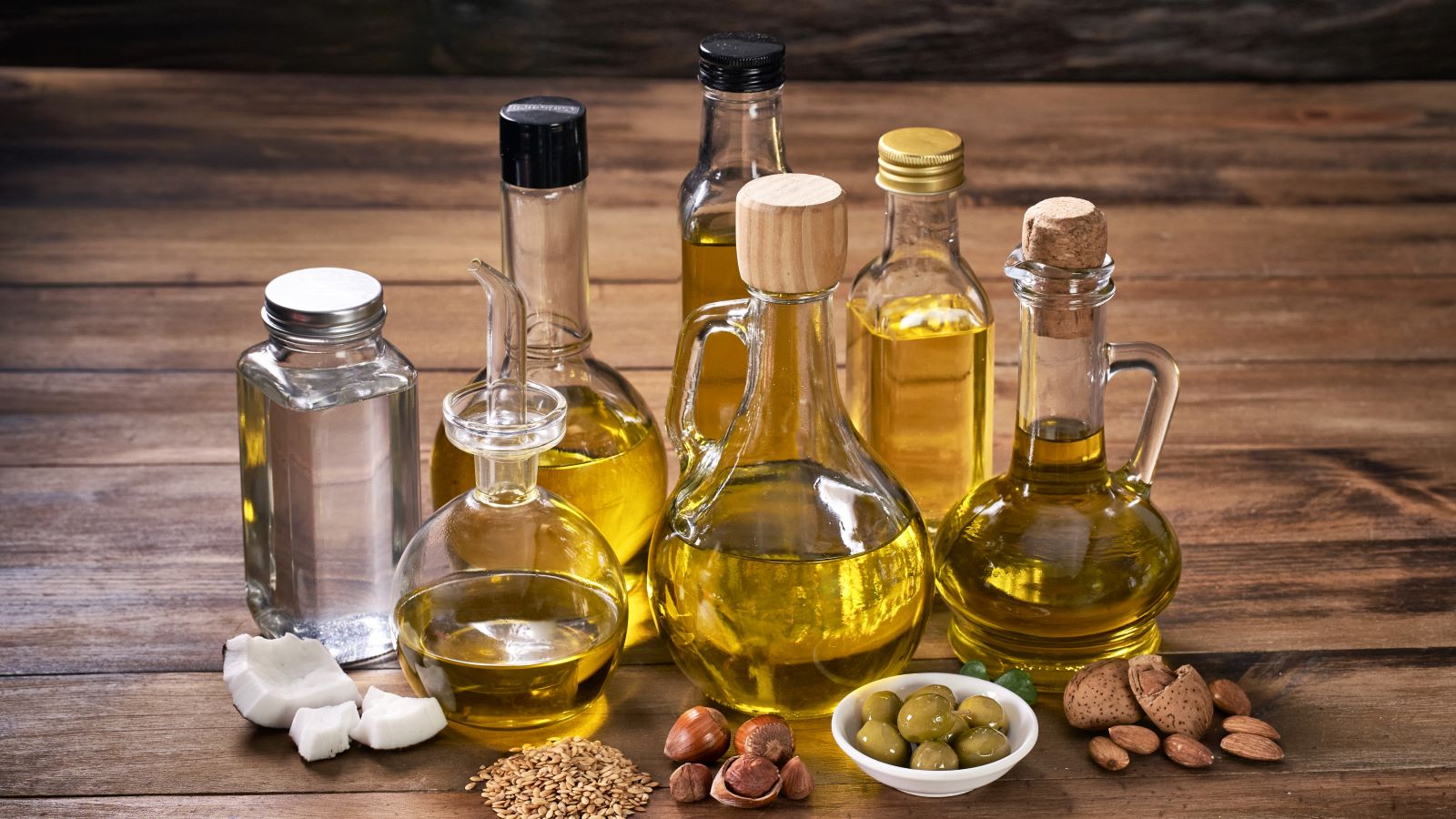<< Back
Which Cooking Oil Is Best for My Health (and My Food)?

April 22, 2025
Cooking oil doesn’t just keep your food from sticking – it can make or break your meal. The right oils add flavor and nutrients, while the wrong ones can do more harm than good.
So how do you know which one to use?
We asked Jillian Wanik, RD, with the Hartford HealthCare Bone & Joint Institute, to break it down so you can make the best choices for your kitchen.
1. Olive oil: A Mediterranean must-have.
Olive oil has long been a favorite in healthy diets – and for good reason.
“It’s high in both monounsaturated fats and antioxidants, making it one of the best choices for your heart,” says Wanik.
Extra virgin olive oil (EVOO) is minimally processed, retaining more nutrients and offering a bold, fruity flavor. This makes it a great option to drizzle over cold dishes, but with a low smoke point, it’s not ideal for high-heat cooking.
Best uses: Drizzle over veggies, mix into salad dressings or finish cooked dishes.
> Related: 9 Foods to Eat If You’re Trying the Mediterranean Diet
2. Avocado oil: The high-heat hero.
Step aside, olive oil. There’s another heart-healthy option in town.
“Avocado oil is also high in monounsaturated fats, but it has a much higher smoke point. This makes it better for cooking at high temperatures,” Wanik says.
To get the most nutrients, look for a cold-pressed option.
“These are less refined, and contain more antioxidants and other helpful compounds,” Wanik notes.
Best uses: Sautéing, roasting, grilling and high-heat cooking.
> Related: 4 Reasons to Eat More Avocado
3. Coconut oil: Trendy but tricky.
From cooking to skincare, many swear by coconut oil. But should they?
“At 91% saturated fat, coconut oil should be used sparingly,” Wanik cautions.
> Related: 6 Healthy Sources of Fat to Add to Your Diet
Best uses: Adding flavor to baked goods or stir-fries.
4. Sesame oil: For bold flavor.
Sesame oil is a staple in Asian cooking, but is it good for you?
“Sesame oil has a mix of both monounsaturated and polyunsaturated fats, but it’s the omega-6s you should keep an eye on,” says Wanik. “Sesame oil is high in them, meaning it could increase inflammation.”
It’s important to balance these with omega-3s (found in fish and nuts) and omega-9s (found in olive, almond and avocado oils).
Best uses: Stir-fries, marinades, and dressings. Store in the fridge to prevent oxidation.
5. Vegetable oil: The processed pick.
Vegetable oil might sound healthy, but it’s often more refined than the rest.
“Refining oil strips away beneficial plant compounds, like antioxidants,” says Wanik. “This allows the oil to be used at a higher heat, but takes away many of the nutrients.”
Best uses: Baking or frying when a neutral flavor is needed.
Here’s what it comes down to.
If you need to add flavor in a dish, oil can be a great option. But no one oil is perfect for everything.
“If you’re cooking at high heat, avocado oil is a great choice. For cold dishes, extra virgin olive oil is the better option. For baking, you might look to vegetable oil. It really just depends on your needs – and your health goals,” says Wanik.
And the fat found in oil doesn’t just give food flavor – it also makes you feel full and helps your body absorb vitamins.
“Try to focus on a variety of healthy fats, while avoiding saturated fat,” Wanik suggests. “It’s also important to balance your omega-3s and omega-6s, and use minimally processed oils whenever possible.”
So choose your oils wisely, and you can make your meals a little healthier – and a lot more delicious.